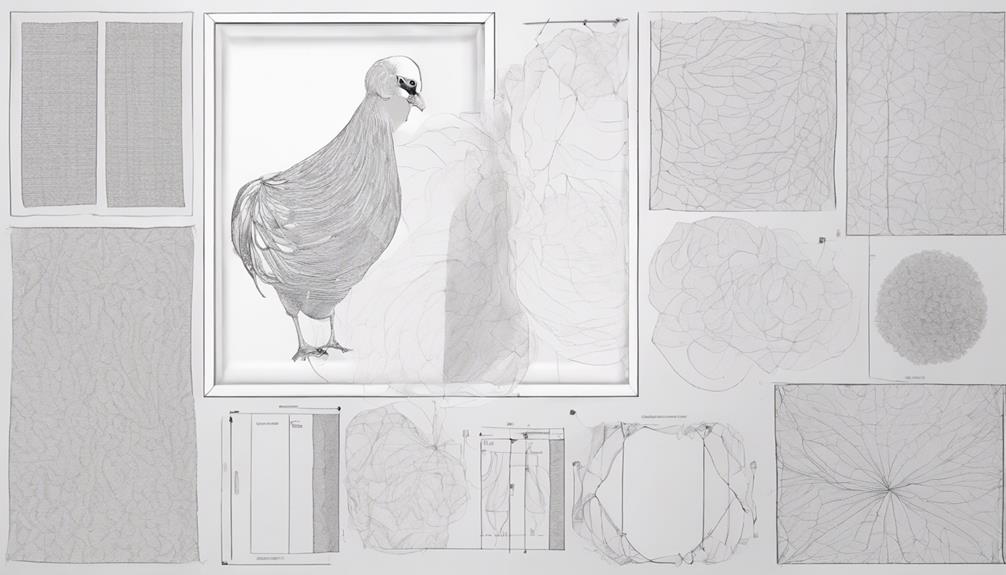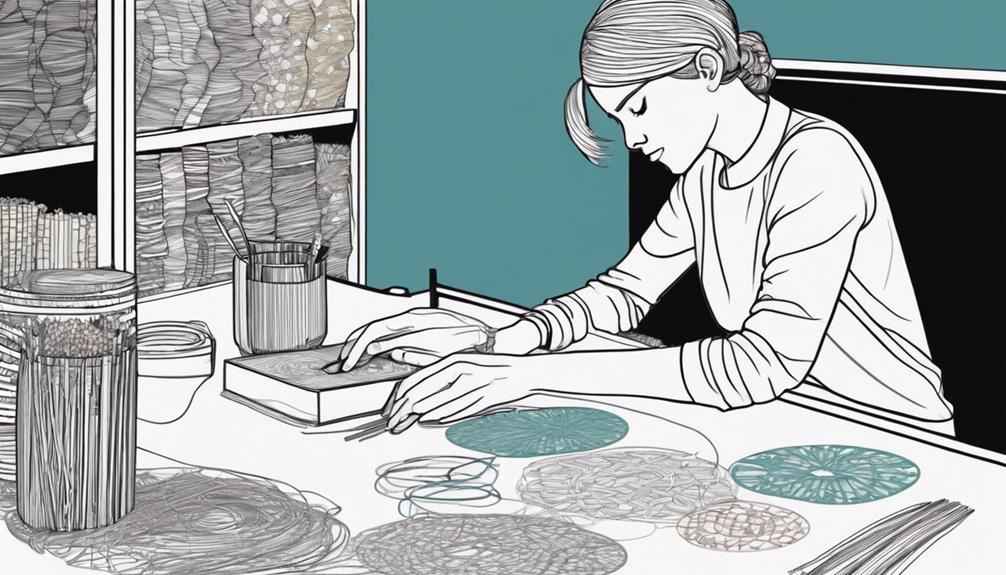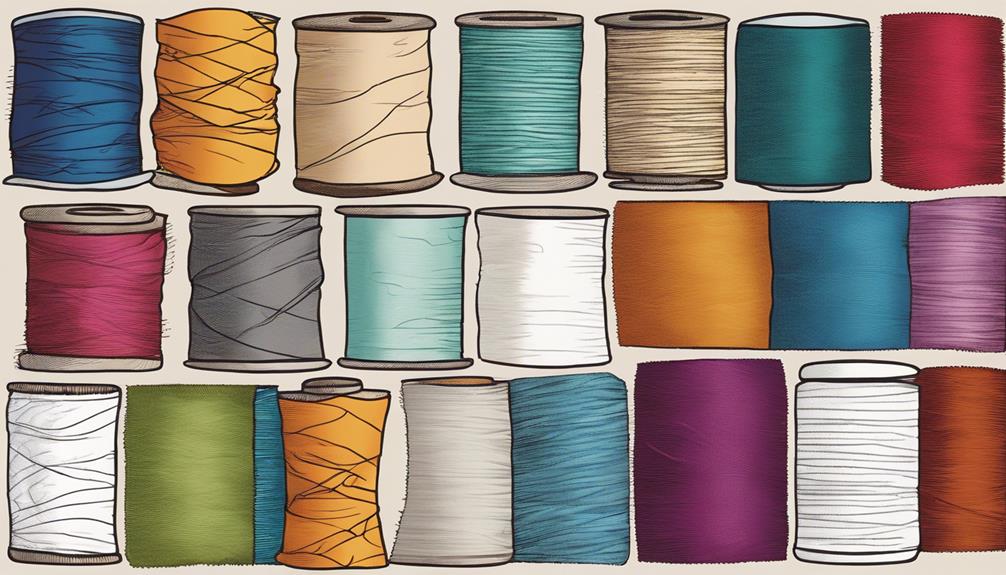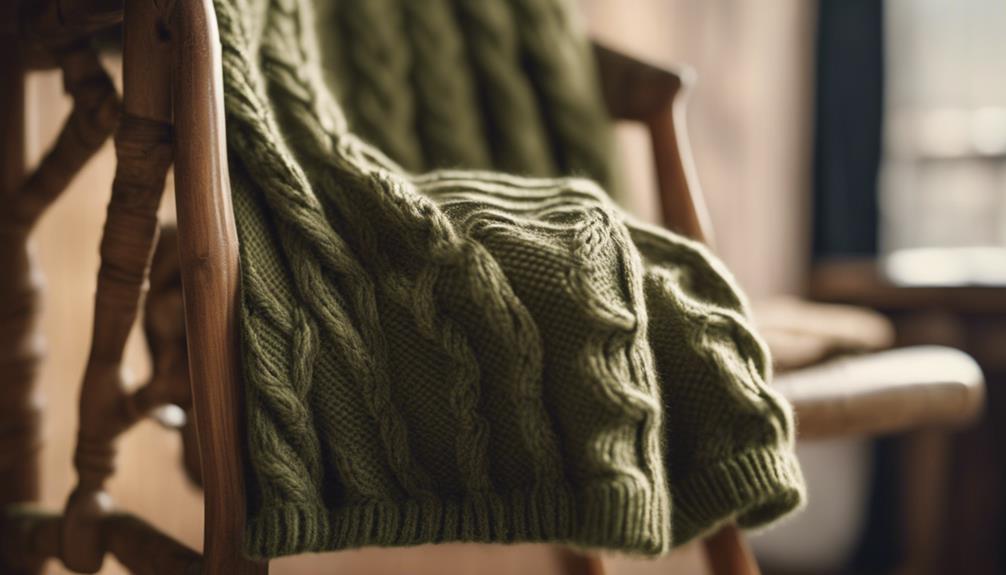When framing large textile art, it is crucial to prioritize conservation framing. Utilize acid-free materials and UV-protected glazing to safeguard the art from potential damage and maintain its beauty. Evaluate the fabric’s condition and opt for appropriate mounting techniques like hand-sewing or pin mounting. Utilizing UV-filtering glass can help shield the artwork from harmful rays. Place the artwork in an area with minimal exposure to sunlight and keep humidity levels moderate. Regularly check and dust your framed textiles. Custom framing can elevate the visual appeal of the artwork. Make sure that the frame size complements the textile’s dimensions for a striking presentation. By adhering to these guidelines, you can frame your large textile art beautifully while safeguarding it for years to come.
Key Takeaways
- Use conservation framing techniques to protect large textile art.
- Ensure proper mounting with secure attachment methods.
- Choose UV-filtering glazing to safeguard from light damage.
- Consider frame size and style to enhance visual appeal.
- Display in low sunlight areas with moderate humidity for preservation.
Conservation Framing Importance
To properly preserve large textile art, conservation framing is essential. Conservation framing involves using acid-free materials, UV-protected glazing, and proper mounting techniques to shield the artwork from environmental factors like light, humidity, and handling.
By employing conservation framing services, you safeguard the integrity and aesthetics of your large textile artworks are protected for future generations to appreciate.
Investing in conservation framing isn't just about protecting your art in the present; it's about securing its quality and value over time. With the right framing techniques, you can maintain the beauty and longevity of your large textile art pieces, whether they're for display or storage purposes.
When it comes to valuable or sentimental textile art, proper conservation framing is an essential step towards ensuring that these pieces remain in excellent condition for years to come.
Textile Preparation and Assessment
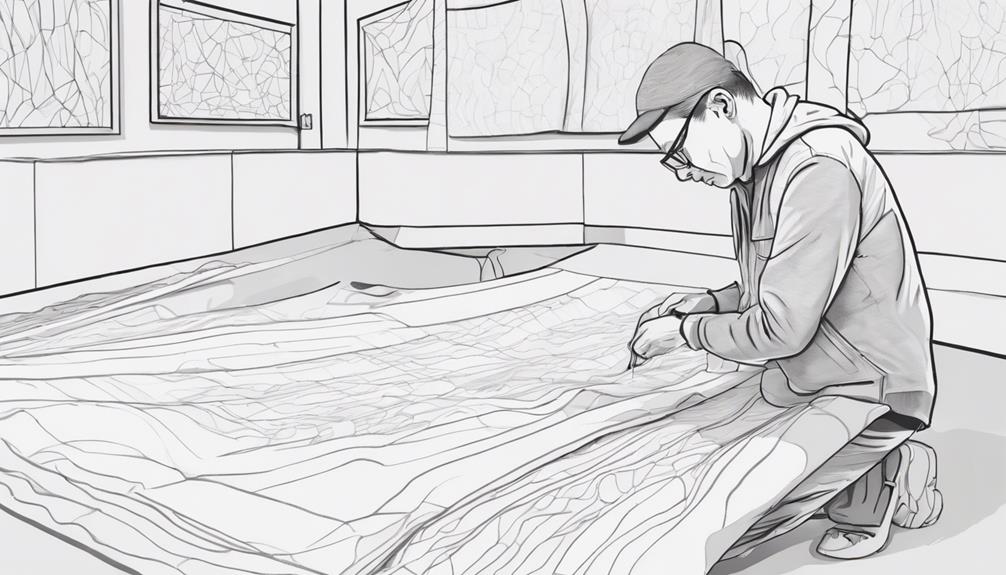
Before framing large fabric art, evaluate the state of the fabric by inspecting for wear, tear, or discoloration. If the fabric appears aged or soiled, consider professional cleaning to guarantee proper preservation.
When framing, opt for acid-free backing and mounting materials to safeguard the fabric from deterioration over time. It's vital to select a frame that enhances the aesthetic of the fabric, creating a unified and visually appealing presentation. Explore different frame styles to discover the best fit for showcasing large fabric art pieces.
Proper Mounting Techniques
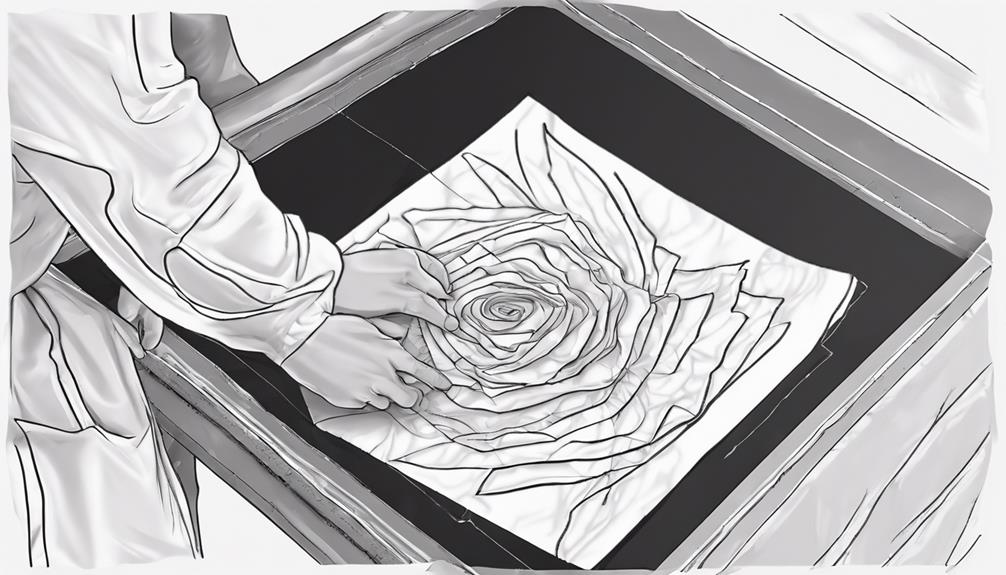
When mounting large textile art, it is important to secure the fabric properly. This can be achieved through hand-stitching, pin mounting, or stretching techniques. Professional mounting methods are essential for preserving and displaying your textile artwork effectively.
Remember to use acid-free materials to protect the fabric during the mounting process.
Mounting Fabric Securely
For best display and preservation of large textile art, securing the mounting of the fabric is key. To mount fabric securely, framing techniques like using sturdy materials such as foam core boards are essential. Foam core boards provide a stable surface for attaching the textile without causing any harm.
Techniques such as pin mounting or stretching can be utilized to guarantee that the fabric is securely attached to the backing. This secure mounting is crucial to prevent issues like sagging, wrinkles, or damage over time.
Choosing the right mounting method is essential to maintaining the integrity and appearance of large textile art. By following proper mounting techniques, you can guarantee that your textile art is securely displayed and preserved for years to come.
Securing Textile Artwork
To ensure the proper display and preservation of your large textile artwork, securing it with appropriate mounting techniques is vital.
When it comes to securing textile artwork, here are some essential steps to follow:
- Use Strong Frames: Frames provide structural support and help maintain the shape of the textile over time.
- Utilize Archival Supplies: Opt for archival-quality supplies such as acid-free backing boards and mounting tapes to prevent deterioration of the fabric.
- Maintain Even Tension: Stretching the textile evenly over the backing board helps prevent sagging and maintains a smooth display surface.
Professional Mounting Techniques
Applying professional mounting techniques for large textile art guarantees safe display and preservation, protecting the artwork for years to come.
Professional framers employ various methods such as hand-sewing, pin mounting, and stretching to ensure the textiles are securely mounted for framing.
Using acid-free materials is crucial to prevent damage and preserve the integrity of the artwork over time.
Hand-sewing is particularly suitable for delicate and vintage textiles, offering a gentle yet reliable way to mount them.
On the other hand, pin mounting is recommended for sturdy fabrics that can withstand this method effectively.
Stretching is ideal for textiles that require tension to be displayed properly within a frame, ensuring a smooth and taut appearance.
These proper mounting techniques play a crucial role in safeguarding large textile art, maintaining its condition, and promoting longevity for future generations to appreciate.
Glazing Selection for Protection

What glazing options are best for protecting large textile art from light damage?
When it comes to preserving your textile art, selecting the right type of glazing is essential. Here are some options to contemplate:
- UV Filtering Plexiglas: This type of glazing helps block harmful UV rays that can cause fading and damage to your artwork over time.
- UV Filtering Glass: Similar to Plexiglas, UV filtering glass provides protection against UV light while offering a traditional look.
- UV Filtering Non-Glare Glass: If you want to reduce reflections on your large textile art while still ensuring protection from light damage, this could be the ideal choice.
Displaying Framed Textiles
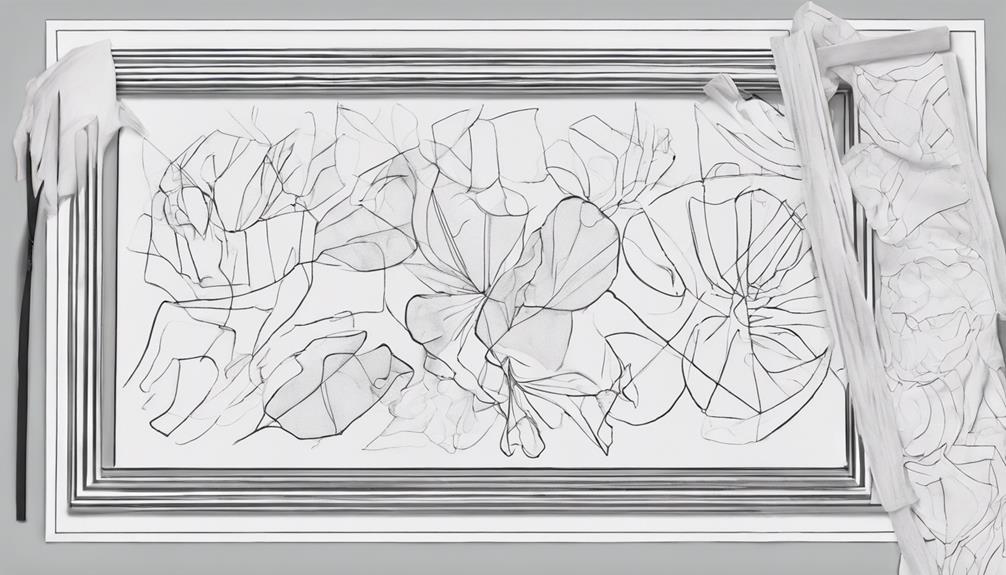
Consider the optimal location and environmental conditions when displaying framed textiles to guarantee their preservation and visual impact. Custom framing offers a way to showcase your textile art while protecting it from dust and damage. High humidity can be detrimental to textiles, so make sure the display area is well-ventilated.
| Tips for Displaying Framed Textiles |
|---|
| Choose a location with minimal direct sunlight. |
| Confirm the room has moderate humidity levels. |
| Regularly dust the frame and inspect for any signs of deterioration. |
| Custom framing can enhance the visual appeal of your textile art. |
| Consider the aesthetics of the room when deciding where to hang your framed textiles. |
Textile Framing FAQs
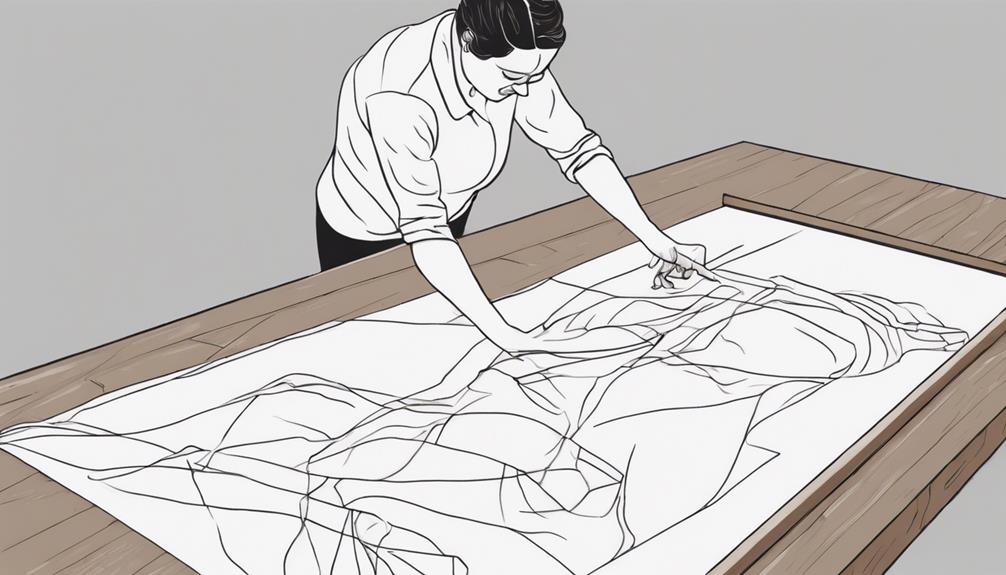
To properly frame large textile art, you may need to explore custom solutions tailored to size constraints. When it comes to framing your oversized textile piece, you might've some questions.
Here are some FAQs to guide you through the process:
- Can oversized textile art be framed like regular-sized pieces? Yes, but considering the weight and dimensions of the textile art is essential. Wooden frames are often recommended for their strength and support.
- Do I need specialized mounting techniques for large textile art? Depending on the size and weight of the artwork, specialized mounting techniques may be necessary to guarantee proper display and longevity of the piece.
- Should I consult with framing experts for oversized textile art? Absolutely! Professional framers can offer valuable guidance on framing techniques tailored to your specific large textile art, ensuring it's showcased elegantly and securely.
Framing Large Textile Art Benefits
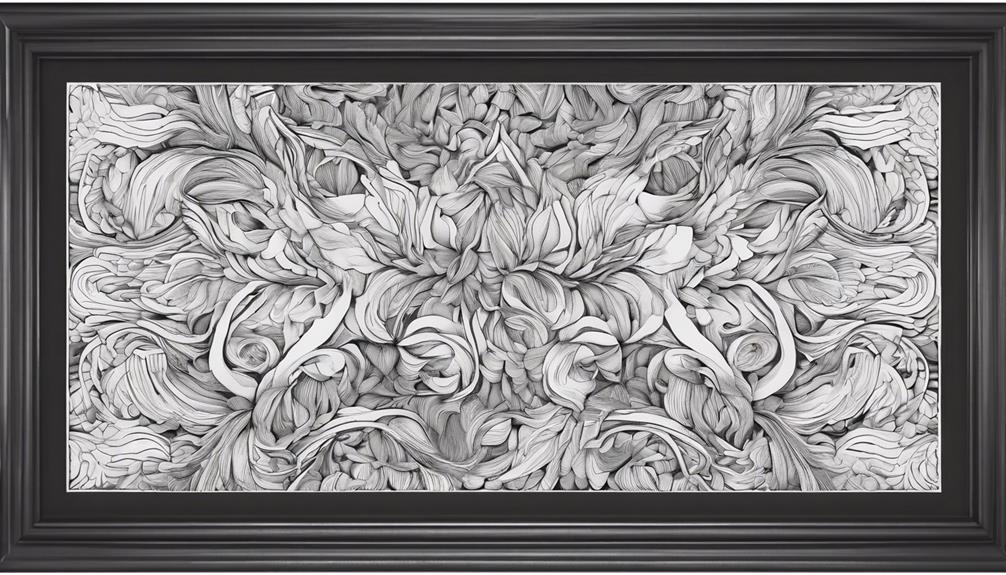
When it comes to framing large textile art, several key factors need to be considered.
Size considerations help determine the frame dimensions needed to properly showcase your artwork.
Tackling mounting challenges is crucial, as the weight of the textile and its delicate nature may require special techniques for secure framing.
Exploring various display options can enhance the overall presentation and impact of your large textile art piece.
Size Considerations
You'll want to take into account the size of your large textile art when framing it to maximize the benefits of protection and presentation.
When considering the dimensions of your textile piece, keep in mind the following:
- Proper Fit: Choose a box frame that provides enough space between the textile art and the glazing to prevent any contact that could potentially damage the artwork.
- Visual Impact: The size of the frame should complement the dimensions of the textile piece, enhancing its overall visual appeal and making it a compelling focal point.
- Handling Ease: Opt for a frame size that allows for easy installation and handling, ensuring that the large textile art can be securely displayed without any difficulties.
Considering these size considerations won't only protect your large textile art but also elevate its presentation, making it a standout piece in any setting.
Mounting Challenges
How can mounting challenges be overcome when framing large textile art to guarantee its secure and even support within the frame?
Mounting large textile art can present unique challenges due to the sheer size and weight of the piece. Proper mounting techniques are crucial to guarantee that the textile is securely and evenly supported within the frame. Conservation framing specifically designed for large textiles can help preserve the artwork for years to come by safeguarding it from dust, dirt, and potential damage.
When facing mounting challenges with large textile art, considering professional framing services can provide expertise and solutions.
These professionals have the necessary knowledge to address the complexities of mounting large textiles, ensuring that the artwork is properly secured and supported within the frame. By opting for conservation framing and seeking expert help, you can tackle mounting challenges and protect your large textile art for future generations to enjoy.
Display Options
Framing large textile art not only protects it from dust, dirt, and damage but also enhances its longevity and visual appeal. When considering display options for your textile artwork, there are key benefits to keep in mind:
- UV-Protection: Opting for frames with UV-protective glazing shields the artwork from harmful light exposure, preventing colors from fading and preserving intricate details for years to come.
- Professional Presentation: Professional framing elevates the presentation of large textile art, imparting a sense of elegance and sophistication that enhances the overall viewing experience.
- Market Value: Proper framing increases the marketability and perceived value of your textile art, making it more attractive to potential buyers, collectors, and art enthusiasts seeking well-preserved pieces.
Frequently Asked Questions
How Do You Frame a Large Textile?
To frame a large textile, start by selecting a shadow box frame that suits the artwork's size and depth. Use acid-free materials for backing and mounting to protect the textile.
Confirm the frame has sturdy support and hanging features for secure display. For oversized pieces, consider professional framing services.
Custom framing offers choices in style, mat color, and glazing to enhance the presentation of your large textile art.
How Do You Display Large Textiles?
To display large textiles, consider hanging them on walls using curtain rods or quilt hangers. Mounting on canvas frames guarantees a smooth display.
Opt for tapestry rods or a fabric sleeve with a rod for an elegant appearance. For flexibility, install a gallery rail system to adjust displays easily.
These methods showcase large textiles without causing harm and provide various options to fit your style and space.
Should You Frame Textile Art?
Framing textile art can elevate its presentation, protect it from damage, and enhance its market value. While some may argue that framing can be expensive, the benefits far outweigh the costs.
Adding a frame can preserve the artwork's colors, details, and integrity for years to come. It also gives a polished and professional look that can attract potential buyers or collectors.
How to Mount a Fabric Picture?
To mount a fabric picture, you can fasten the textile onto a backing board using techniques like pinning or hand-stitching. This process guarantees the fabric is flat, taut, and properly positioned for framing.
Proper mounting is vital for protecting and preserving the fabric picture. It's a necessary step before framing to achieve a professional and secure display that showcases your textile art beautifully.
Conclusion
Now that you have mastered the art of framing large textiles, your creations will be beautifully displayed and protected for years to come.
With proper conservation framing, mounting techniques, and glazing selection, your textile art will shine in any space.
So go ahead, showcase your talent and creativity with confidence, knowing that your artwork is framed to perfection.
The possibilities are endless when it comes to framing large textile art – so get started and let your imagination run wild!

